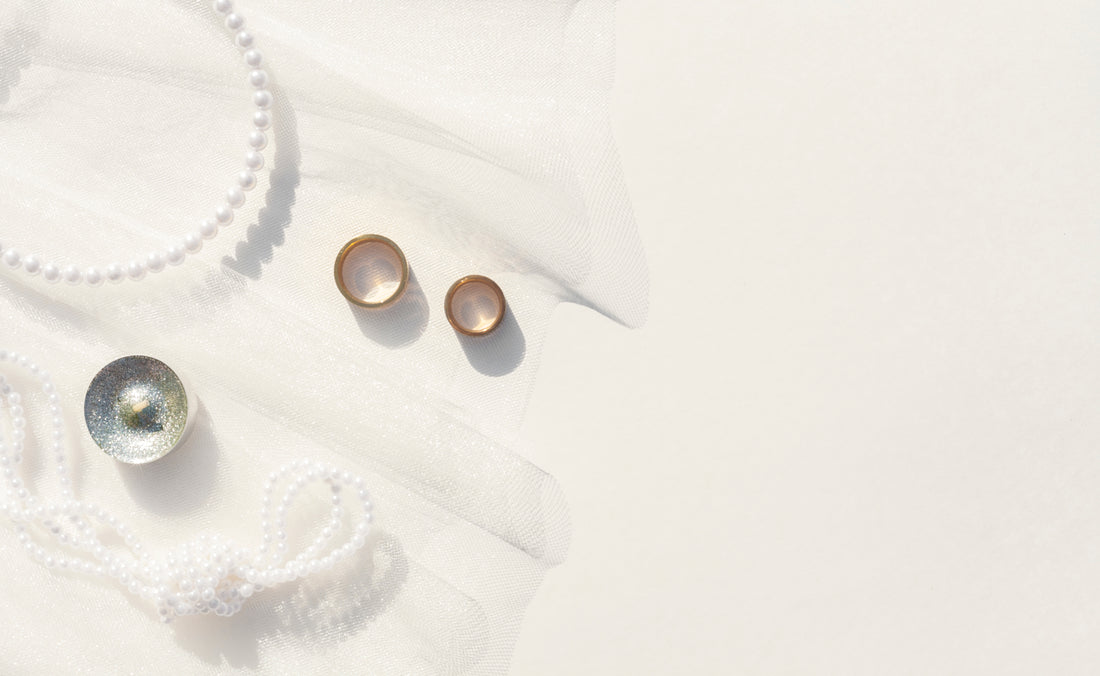925 Silver vs. Sterling Silver: Understanding the Differences and What It Means for Your Jewellery
-
Table of contents
When shopping for silver jewellery, you may have encountered terms like "925 silver" and "sterling silver." While these terms are often used interchangeably, understanding the difference between them can help you make informed decisions when purchasing fine silver pieces. In this blog, we’ll explore what 925 silver and sterling silver mean, how they compare, and why these distinctions matter when choosing jewellery.
What Is 925 Silver?
925 silver refers to the purity level of the silver alloy used in the jewellery. It means that the piece is made of 92.5% pure silver, with the remaining 7.5% consisting of other metals, usually copper. The term “925” is a hallmark or stamp found on silver jewellery, indicating its composition.
What Is Sterling Silver?
Sterling silver is the standard name for silver that contains 92.5% pure silver and 7.5% other metals. The most common alloy used with pure silver is copper because it adds strength and durability to the metal without compromising its beautiful, lustrous appearance. This specific alloy mixture, known as sterling silver, is widely used in making jewellery, tableware, and other silver items.
Are 925 Silver and Sterling Silver the Same?
In essence, 925 silver and sterling silver are the same. The terms both refer to the same silver alloy consisting of 92.5% pure silver and 7.5% other metals. The number “925” is simply a numerical way of expressing the purity of the silver used in the alloy, while "sterling silver" is the traditional name for this specific silver standard.
Why Is Pure Silver Not Used for Jewellery?
Pure silver, also known as fine silver, is composed of 99.9% silver. While it is highly valued for its purity and beautiful shine, pure silver is too soft and malleable for most practical uses, especially in jewellery. Pure silver pieces can easily bend, scratch, or lose their shape over time.
To address these issues, silver is mixed with other metals, such as copper, to create an alloy that retains silver's aesthetic appeal while adding the necessary durability and strength. Sterling silver (or 925 silver) strikes the perfect balance, providing a material that is both beautiful and suitable for everyday wear.
The Benefits of Sterling Silver (925 Silver)
-
Durability and Strength The addition of 7.5% copper or other metals to pure silver creates an alloy that is much stronger and more durable. This makes sterling silver ideal for crafting intricate jewellery designs that can withstand daily wear without easily deforming or scratching.
-
Affordability Sterling silver offers an affordable alternative to precious metals like gold and platinum, while still providing a luxurious and high-quality appearance. Because it is a widely used alloy, sterling silver jewellery is available in a vast array of styles and designs, catering to different tastes and budgets.
-
Versatility in Design Sterling silver is highly versatile and can be easily shaped, engraved, or set with gemstones, making it a popular choice for a wide range of jewellery designs. Whether you prefer minimalist pieces or elaborate, ornate designs, sterling silver can accommodate your style preferences.
-
Hypoallergenic Properties Sterling silver is generally considered hypoallergenic, especially when the alloy is free from nickel. This makes it a suitable option for individuals with sensitive skin who may experience reactions to other metals.
-
Timeless Appeal The classic and sophisticated appearance of sterling silver ensures that it never goes out of style. Sterling silver jewellery is timeless, making it a great investment for those looking to build a versatile and enduring jewellery collection.
How to Identify Sterling Silver (925 Silver)
To ensure that you’re purchasing genuine sterling silver, look for a hallmark or stamp on the jewellery. The most common marks include “925,” “.925,” “Ster,” or “Sterling.” These marks indicate that the piece is made of 92.5% pure silver, confirming its authenticity as sterling silver. Be cautious of silver jewellery that lacks these markings, as it may be plated or made from lower-quality materials.
Caring for Sterling Silver Jewellery
While sterling silver is durable, it is still prone to tarnishing over time due to the presence of copper in the alloy. To keep your sterling silver jewellery looking its best:
- Regular Cleaning: Use a soft cloth or a silver polishing cloth to gently clean your jewellery and remove tarnish.
- Proper Storage: Store your silver jewellery in a dry, cool place, ideally in anti-tarnish pouches or a lined jewellery box.
- Avoid Contact with Chemicals: Keep your jewellery away from harsh chemicals, including perfumes, lotions, and cleaning products, to prevent damage.
Conclusion
Understanding the difference between 925 silver and sterling silver can help you appreciate the quality and craftsmanship of your jewellery. Since these terms both refer to the same silver alloy, you can confidently choose sterling silver (925 silver) knowing that you’re investing in a durable, versatile, and timeless metal that will bring beauty to your collection for years to come.

